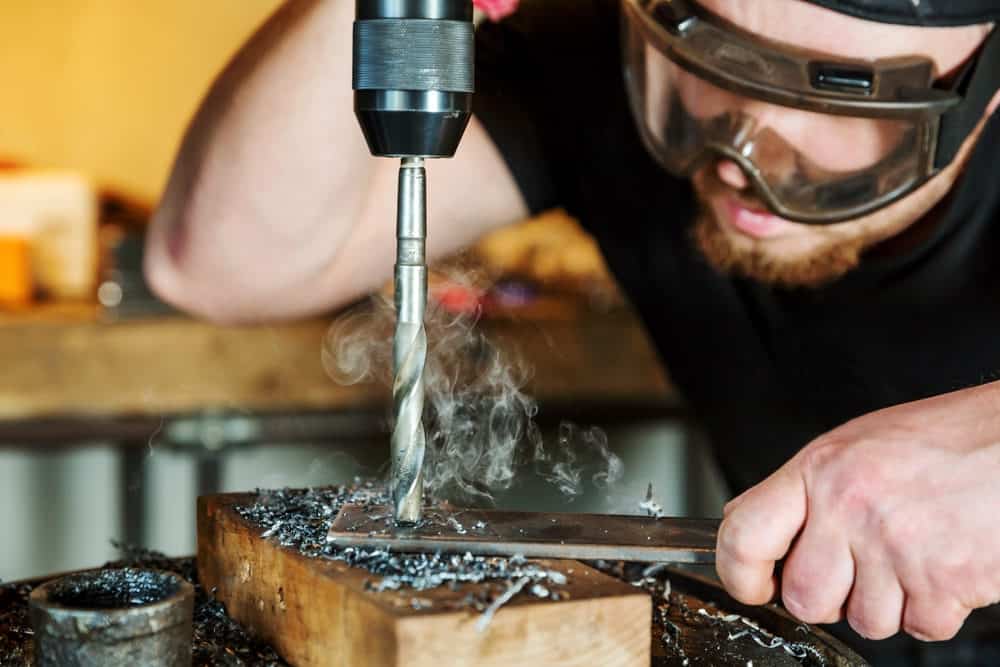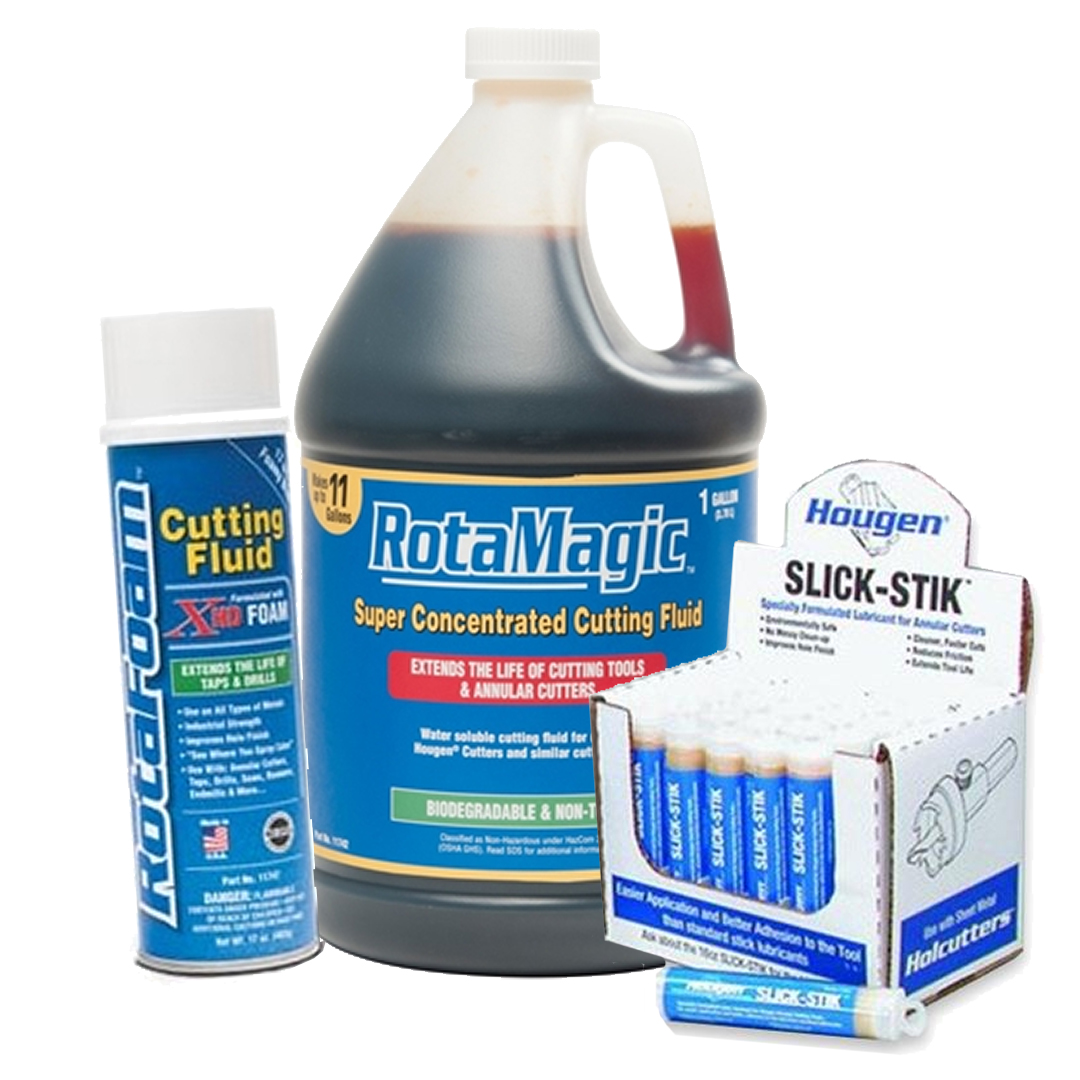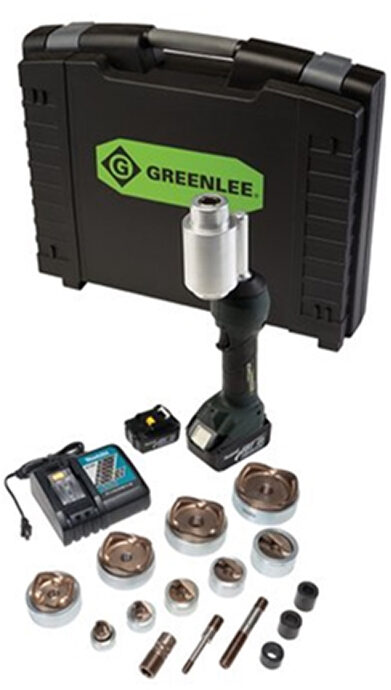Drilling holes into metal isn’t the most straightforward task for those who don’t do it for a living. Even if you do, choosing the right tool for the job isn’t always easy. There are a lot of factors to take into consideration–how many holes are you drilling? What material are you drilling through? What size hole is needed? These factors play a big role in how quickly, efficiently and affordably you can get the job done, so here are some tips on how to determine what type of tool is right for you.

Before You Start Drilling
Before you begin, you should make sure that all of your tools are prepped accordingly. Firstly, the material you’re drilling into will determine the type of hole drill that you should use. When drilling into metal, slower RPMs are actually better than fast ones. This is because it gives a smoother and more precise outcome, unlike drilling into wood, which requires high RPMs. You can check if your drill is going too fast by looking at the chip sizes that come off of the metal. If long, curly ribbons are coming out as you drill, that means you’re working with a good RPM. If the chips are coming out as a fine dust, your drill is spinning too fast and you should slow it down. 200-400 RPMs are recommended for the best results.
You also should be lubricating your drill bit before use. This helps preserve the lifespan of the bit, reduces friction, and keeps the drill steady on its point of contact. Wax, sprays, and oil can be used for this depending on the angle and size of the hole you are drilling. Cutting fluid and multipurpose oils work great for drilling holes 1/8” or larger.
Drilling into Sheet Metal
Sheet metal is used in some fashion in almost every trade. When drilling into this material, there are a variety tool options based on the type of hole you are trying to achieve. The first are twist drill bits, which are great for cutting precise holes less than ½” in diameter. These bits are incredibly durable, inexpensive, and easy to find in stores. They also work in any drill, which makes them arguably the most common solution, but these are not ideal if you’re going to be drilling a lot of holes. If you aren’t sure exactly what size hole you’ll need, step drill bits are also a relatively inexpensive, efficient option when drilling a small amount of holes.
Once you start drilling holes around ¾” or larger, it’s best to switch to bi-metal hole saws for a longer lasting option, or carbide hole saws that are faster and more durable for those larger holes. Bi-metal hole saws usually cost around $9, with carbide hole saws slightly higher, around $15. These options are also durable, versatile, inexpensive, and readily available almost anywhere.
RotaCut bits are an excellent choice for holes ranging from ¾” to 1-1/2”. They can be used in handheld drilling applications and are specifically designed to cut through sheet metal. In our testing, we found that RotaCut bits easily cut even through I-Beam using a cordless drill, so they are definitely something to consider when cutting through different materials. These typically far outlast traditional twist drill bits and run around $9, making them a great long lasting and inexpensive option.
For repetitive hole making where thousands of holes will be needed, a Hole Punch is a good option. These are limited, however, by shallow throat depth, meaning they’re really only an option when working 1″ – 2” from the edge of a material. The price tag also jumps dramatically (over $2,000), so it’s not a solution most will consider.
Similarly, if you are drilling large holes (2”-4” in diameter), Knockout sets become a great option. These are a common solution for making holes in electrical panels where a punch & die make a nice clean hole. Hydraulic or Manual Knockout Set prices start around $900, with cordless M18 Knockout Sets even getting to $1,000+. These higher price tags are why we don’t see the Knockout tools being that popular outside of the electrical trades, but they are a terrific option. A good, affordable option for larger holes in sheet metal are HolCutters, which top out at 3” but only cost around $30.
Drilling into Steel Plates
Steel plates can come in pretty much any size, so it’s important to consider the thickness of the plates you’re drilling into before working because it can drastically impact the performance of your drill. For instance, Magnetic Drill Presses are a common solution for drilling into steel plates, but sometimes the steel plate may not be thick enough to provide a sufficient amount of magnetism to hold the metal in place during use. There are a couple solutions for this. One is using a drill that comes equipped with features that measure magnetic force. Many of CS Unitec’s drills use green/red LED lights to indicate if the tool is safe to use at that level of magnetism, so these are a great option for any steel plate drilling projects. Another solution when working with thin steal plates is to add another piece of steel under the one you are drilling, which will ensure that it is thick enough to provide enough magnetism under load.
When it comes to making small holes, a lot of the same products you can use in sheet metal are similarly effective in steel plates: twist drill bits, step drill bits or a hole punch. With all of these, however, the thicker the steel plate, the less efficient. Silver and deeming bits are a popular option for drilling somewhat larger holes into steel, but this is more the ‘old school’ approach–pushing through the metal rather than carving out a hole. These are not necessarily the most efficient, especially when working on thick plates.
For holes ½” or larger, we recommend using carbide hole saws, RotaCut bits or a mag drill and annular cutter bits. These will be the most precise, efficient, and cost-effective options in any plate, and they are long-lasting options that won’t wear-out easily over time.
Drilling into Structural Steel
Larger I-Beams and thicker metal come with their own set of challenges and solutions. For small holes (less than 1/2″ diameter), twist drill bits remain the best option. They work in any drill, are inexpensive, durable, versatile for wood or metal, and are readily available pretty much anywhere. The thicker the material becomes, however, the more important a steady alignment becomes. At this thickness, a mag drill with a chuck adapter makes a lot more sense. The mag drill with annular cutter bits is going to be the most accurate, precise, fastest and often the most cost effective option for hole making. As mentioned before, however, when we tried cutting through I-Beam with RotaCut bits and a cordless dill, it went nearly as smoothly and quickly as the mag drill and annular cutter bit, so this is a great option that’s more affordable if you don’t need to make as many holes.
There are a few options we really would not recommend for drilling into materials this thick. Hole saws are still used by some, but this is certainly not the intended use and has very little life expectancy. You’ll likely see breakage and wear after just 1 use on this type of material. We also don’t recommend any twist drill bits or silver and deeming bits (that’s not in a press of some sort), however, reamer bits are extremely common for hole enlarging and hole alignment in structural steel.
For large holes (3″+ in diameter) in thick metal, there are very few options. This is a tough task that only a few tools can handle, and we recommend the CS Unitec MAB1300–the monster of all mag drills. With a 5” diameter and 4” depth of cut capacity, this tool stands nearly 3’ tall and weighs 112 lbs., but it is a beast that gets the job done well.
So Which Solution is Best?
Hopefully this post has been helpful for showing the various ways to make holes in metal, which heavily depend on the diameter of the hole needed and thickness of the metal you’re drilling. There are also other important variables that come into play–how many holes need drilled, how precise they need to be, how much your labor time is worth and if this is a one-time thing or everyday task. Investing in a $3,000 hole punch seems ludicrous when a $5 drill bit will do the same thing, which is of course true if you’re only drilling 10 holes one time. Change those 10 holes to 100,000, though, and things start to look a little different. If you save 30 seconds per hole in labor and say 830 man hours at $30/hour, that’s a $25,000 difference–definitely worth the investment.

It’s important to do your research before selecting a tool for drilling through metal to ensure the best results. If you’re planning on completing any hole drilling projects and need help deciding on the right tool for you, the Ohio Power Tool team can help! Give us a call at 800-242-4424, email us at sales@ohiopowertool.com, or leave a comment below for assistance. To be the first to know about new products and deals, subscribe to our e-newsletter and follow us on social media!






